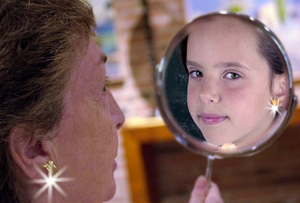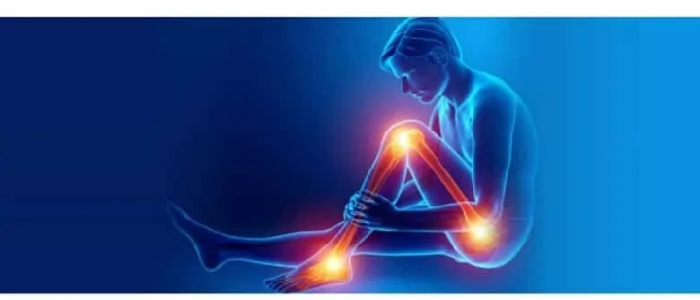 Jane E Brody, Oct 7: At a party I recently attended, a woman in her 60s proudly announced that her periodic facial treatments “have made me look 10 years younger.” A man of similar vintage said he was considering “facial tucks” to raise his sagging jowls.
Jane E Brody, Oct 7: At a party I recently attended, a woman in her 60s proudly announced that her periodic facial treatments “have made me look 10 years younger.” A man of similar vintage said he was considering “facial tucks” to raise his sagging jowls.
Some days it seems everyone I meet is afraid of getting old - or at least of looking as old as they are. Occasionally, I see women who have had so many face lifts that they can barely move their lips when they talk, let alone smile.
Business is booming in the anti-aging market. Plastic surgeons who specialise in lifts, tucks and fillers barely noticed the recent recession. Cosmetics with anti-ageing properties fly off the shelf, and new concoctions appear almost weekly.
I admit to supporting the multi-billion dollar skin care industry with my long use of night creams, as well as a slew of daytime lotions that purport to “smooth out” aging skin while protecting it with sunscreen. I also colour my hair, which in its natural state is now about 80 per cent gray.
But I draw the line at injectable fillers and muscle relaxants, face lifts and tummy tucks. I’ll do everything I can to stay out of an operating room. My anti-aging measures, if and when they are needed, will be limited to cataract removal, a hearing aid and glasses for driving.
I wear clothes that suit my personality and activities, not necessarily my age. Shorts and tank tops anchor my summer wardrobe. And I wear colours near my face that are right for my skin tone, avoiding those (like yellow) that are unflattering. Still, cosmetic fixes go only so far to counter the effects of time.
True youthfulness - or, I should say, appearing younger than your age - is much more than skin-deep. Research has shown that youthfulness must come from within.
In one study, a team at Case Western Reserve University in Cleveland analyzed the facial photographs of 186 pairs of identical twins, determining which sibling looked older and why. Factors that contributed to looking older included smoking, sun exposure, stress and depression (or the use of antidepressants), the researchers reported. Other studies have linked depression to higher levels of inflammatory markers and oxidative stress, which can accelerate aging.
The team also found that among those younger than 40, a woman with a heavier body looked older than her leaner twin, but in subjects older than 40, a higher body mass index was associated with a more youthful appearance. Fat fills out wrinkles and makes the face - and presumably other parts of the body - look younger. But there’s a limit to its benefits: obesity is associated with more rapid biological aging.
Another study published last year by researchers at Brigham and Women’s Hospital in Boston found a biological link between stress and accelerated aging. Dr. Olivia I. Okereke and colleagues examined the chromosomes of 5,243 women ages 42 to 69 participating in the Nurses’ Health Study. They found that women with phobic anxiety - irrational fears of anything from social situations to spiders - had shorter telomeres on their chromosomes.
Telomeres are DNA-protein complexes on the ends of chromosomes that are considered biological markers of aging. Shortened telomeres are thought to underlie many of the adverse health effects of aging, and perhaps even to contribute to looking older than one’s years.
Lifestyle changes
A pilot study published online by The Lancet Oncology last month underscored the benefits of limiting stress. Dr. Dean Ornish and colleagues at the Preventive Medicine Research Institute and the University of California, San Francisco, tested the effects of lifestyle changes on the length of telomeres.
Ten men were asked to make changes that included adopting a whole-foods plant-based diet, moderate exercise, stress management techniques (like yoga and meditation), and seeking greater intimacy and social support. After five years, changes in the length of their telomeres were compared with those among 25 men who were not asked to make such changes.
In the men who made lifestyle changes, telomere length increased by an average of 10 per cent; the more changes the men made, the greater the increase in length. But telomere length decreased in the control group by an average of 3 per cent.
Still, youthfulness is not just a question of biology. People are perceived to be younger than their years if they smile and laugh a lot (be proud of those laugh lines!) and are generally cheerful and upbeat, the kind of people who smile at strangers and wish them a good day.
I occasionally pass an older couple who walk together three times a week. With their dour expressions and grudging acknowledgment of my “good morning,” I thought they were in their mid-90s. So one day I asked, only to learn that she was 80 and he was 83.
It also helps to pursue personal and professional activities you enjoy as you get older. My role models include the actress Estelle Parsons, who continues to perform on stage (and can do yoga headstands) at 85, and Dame Judi Dench, 78, who stars in movies despite having to learn her lines orally because macular degeneration has caused her vision to deteriorate.
My dear friend Margaret Shryer, 86, starred in a documentary about age discrimination and performed a one-woman show she wrote at a theater festival in Minneapolis this summer. Another friend, the award-winning broadcaster Lucy Jarvis, cane in hand at 96, still travels abroad to make television documentaries.
To my mind, it is far better to act young than to look young. Of course, it helps to be physically fit.
Too often, those who spend liberally to counter the superficial signs of age neglect their bodies below the neck and become physically old before their time. Muscle tissue inevitably declines with age, but much can be done to minimize and even reverse a loss of strength.
Try using free weights or resistance machines. If these don’t appeal, lift cans of soup (better for lifting than consuming) and continue to do chores that require strength, like digging in the garden or carrying groceries.







Comments
Add new comment